(আগের অধ্যায়ে ডিসেকশন, অবঘর্ষণ, অ্যানাটমি এবং সার্জারি সংক্রান্ত আলোচনার জন্য লিংক – https://thedoctorsdialogue.com/dissection-in-shushtuta-samhita/ – আগ্রহী পাঠকদের কাজে লাগতে পারে)
প্রারম্ভিক কথা
আগের অধ্যায়ে দেখেছিলাম, Kutumbiah বলেছেন যে আয়ুর্বেদে তথা সুশ্রুত-সংহিতা-য় শল্যচিকিৎসার সাফল্যের ক্ষেত্রে মর্ম এবং মর্মস্থলসমূহ “regional anatomy”-র ভূমিকা পালন করেছে। এখন প্রশ্ন উঠবে – মর্ম কী? কেন এর গুরুত্ব এত বেশি?
এর উত্তরও Kutumbiah তাঁর পুস্তকে দিয়েছেন – “Anatomy, though assigned first rank as a means of investigating the structures of the organism, evidently proved of no great avail in the practice of surgery.”[1] পাঠকদের স্মরণে থাকতে পারে আমাদের আলোচনায় আমরা ঠিক এই প্রশ্নে জোর দিয়েছিলাম যে, সুশ্রুত বর্ণিত “ডিসেকশন”-এ কোন অ্যানাটমিস্ট-এর ধারণা নেই। রয়েছে শল্যহর্তা-র ধারণা, যার ইংরেজি প্রতিশব্দ হিসেবে আমরা সার্জন বলতে পারি।
এরপরে Kutumbiah বলছেন – “It is not clear whether dissections formed a part of the training of a surgeon. Susruta does not mention them in this connection. The method of dissection was too imperfect to give any accurate knowledge of the internal organs and of the vascular system of the body so essential for any successful surgery.”[2]
তাহলে সফল সুশ্রুতীয় সার্জারির চাবিকাঠি কোথা ছিল? এর সম্ভাব্য উত্তরও কুটুম্বিয়া দিয়েছেন – “The Indian surgeons surmounted the absence of such precise knowledge of anatomy by the concept of marmas, which supplied them with the regional anatomy so crucial for any intelligent surgery.”[3] কুটুম্বিয়া অনেকটা বিস্তারিতভাবে তাঁর পুস্তকে মর্ম এবং সেসময়ের সার্জারির আলোচনা করেছেন।[4] তাঁর বক্তব্য অনুসরণ করলে বোঝা যায় সুশ্রুত এই বিষয়ে কত পারঙ্গমতার সঙ্গে এবং কত নিখুঁতভাবে শল্যহর্তার কাজটি করেছেন – “Susruta gives a detailed instructions as to the sites at which incisions are to be made in connection with some important marmas.”[5] কুটুম্বিয়া দেখিয়েছেন, উর্বি, কূর্চ-সিরা, বিটপ (a vital point located in the inguinal region, specifically between the groin (বঙ্খন) and the scrotum (বৃষ্ণ), কক্ষ (arm pit), এবং পার্শ্ব-মর্ম – এসমস্ত মর্ম থেকে ১ আঙ্গুল বাদ দিয়ে “incision should be made”[6]। কুটুম্বিয়ার ভাষায় – “Hence all the marmasthānas should be carefully avoided in a surgical operation.”[7]
কুটুম্বিয়া মর্ম-র পরিষ্কার সংজ্ঞা তথা ব্যঞ্জনা ব্যাখ্যা করেছেন এভাবে – “A marma is a junction or meeting place of the five organic structures, that is, of ligaments, blood vessels, muscles, bones and joints.”[8]
মর্ম তথা মর্মন শব্দটি এসেছে √মৃ ধাতু থেকে। এর অর্থ মৃত্যু বা মরণ। মনিয়ের-উইলিয়ামস-এর অভিধান অনুযায়ী এর অর্থ “mortal spot, vulnerable point, any open or exposed or weak or sensitive part” এবং এর উৎস ঋগবেদ-এর নিরুক্ত-তে পাওয়া যায়।[9]
আপ্তে-র অভিধানে এর উৎস হিসেবে উত্তররামচরিত (৩.৩৫), যাজ্ঞাবল্ক্যসূত্র (১.১৩৫), মহাভারত (৩.১০) ইত্যাদির উল্লেখ করা হয়েছে।[10]
য়ুজাস্তিক জানিয়েছেন – “There is a theory shared by āyurveda and the traditional Indian martial arts, that there are 107 “lethal points” on the human body.”[11] Arion Roṣu-কে উদ্ধৃত করে য়ুজাস্তিক বলছেন – “he highlights the parallels between the Indian ideas on marmans, formal gymnastic combat, and several Chinese traditions including those which went into the formation of the Tai Ji Quan in the nineteenth century, and those of acupuncture.”[12] আরও বলেছেন – “The surgeon must at all costs avoid piercing such points; the wrestler or boxer must target them in his contest.”[13]
সুরেন্দ্রনাথ দাসগুপ্ত বলেছেন – “The marmans are vital spots in flesh, śirā, snāyu and bones which are particularly the seats of prāṇa: যখন কোন ব্যক্তি এসমস্ত স্থানে আঘাতপ্রাপ্ত হয় তাহলে এরা তাদের জীবন হারাতে পারে কিংবা বিভিন্ন ধরনের বিকলাঙ্গতার ফলবাহী হয়।“[14]
মিউলেনবেল্ড ঋগবেদ উদ্ধৃত করে জানাচ্ছেন – ইন্দ্র বৃত্তকে সংহার করেছিলেন তাঁর মর্ম-কে বিদ্ধ করে (ঋগবেদ ১.৬১.৬, ৩.৩২.৪। ৫.৩২.৫, ৬.৭৫.১৮, ৮.১০০.৭, ১০.৮৭.১৫ এবং ১৭)। ইন্দ্রের মর্ম-র জন্য দ্রষ্টব্য কৃষ্ণ যজুর্বেদ। মিউলেনবেল্ড আরও জানাচ্ছেন, মর্ম-কে বাস্তুপুরুষ-এর (a cosmic being, the presiding deity of Vastu Shastra, believed to be the spirit of the structure and the earth beneath a building) ক্ষেত্রেও ব্যবহার করা হয়েছে। সিদ্ধা মেডিসিনে বর্ম-র ধারণা মর্ম-র সমগোত্রীয়।[15] তামিল ভাষায় মর্মন বা মর্ম-র সমার্থক শব্দ হল বর্মন। মিউলেনবেল্ডের কথায়, ৩টি প্রধান “vital spots”কে মহামর্মন বলা হয়।[16]
রাহুল পিটার দাস তাঁর সংক্ষিপ্ত ব্যাখ্যায় একথাগুলো ছাড়াও একটি গুরুত্বপূর্ণ তথ্য যোগ করেছেন – “however, there are also marman-s which are not listed in the usual marman-list … In this regard note that Tocharian A marmaň and Tocharian B marmana mean “ducts (for blood)”.”[17]
এখানে Tocharian A এবং Tocharian B সম্পর্কে অল্প কথা বলা দরকার। এই দুটি ভাষা অধুনা অবলুপ্ত ইন্দো-ইউরোপিয়ান টোকারিয়ান ভাষা। এদের সম্পর্কে এনসাইক্লোপিডিয়া ইরানিকা-য় তথ্য দেওয়া হয়েছে – “Tocharian is the conventional name for two closely related Indo-European languages that were spoken in northwest China, in the north of the Tarim Basin in present-day Xīnjiāng. The two languages, usually referred to as ‘Tocharian B’ and ‘Tocharian A,’ are attested by predominantly Buddhist manuscript fragments found in the three regions of Kuča (Chin. Kùchē) in the west, Qarašahr (Chin. Yānqí, Uyg. Qarašähär, Skt. Agni) in the middle, and Turfan (Chin. Tǔlǔfān) in the east. The Tocharian B fragments probably date from the 5th to the 10th centuries CE, and those in Tocharian A from the 7th to the 10th centuries.”[18]
অবশ্য উইকিপিডিয়াতে Tocharian-কে মৃত ভাষা বলে এর সময়কাল বলা হয়েছে প্রথম ১০০০ খ্রিস্টাব্দের মধ্যে। আরও বলা হয়েছে – “Tocharian A is known from around the 2000 manuscripts found … Unlike Tocharian B, there are no secular texts in Tocharian A. One possible explanation is that at the time these texts were written, Tocharian A survived only as a liturgical language and Tocharian B would still have been a living language.”[19] Tocharian A-তে অনেকসময়েই মর্মন-কে (উচ্চারণভেদে “marmän”) মজ্জা বা কোন বস্তুর ভেতরের সারাংশ হিসেবে ধরা হয়।
যোগ-উপনিষদ সমূহতেও মর্ম-র যথেষ্ট উল্লেখা পাওয়া যায়। “The Withdrawal of the Prāṇa from the Seats of Marman”[20] শিরোনামে বলা হয়েছে – “Should there be the holding (of the vital air) in the eighteen different seats of Marman, the withdrawal of it from one seat to another, is what is known as Pratyāhāra.”[21] একথাও বলা হয়েছে – “The projecting (of the vital air) into the eighteen Marman-s (vital parts of the body) in the prescribed order, is the Pratyāhāra (of the fifth variety) The (vital) parts are in the feet, the big-toes of the feet, ankles, shanks, knees, thighs, anus, genitals, navel, heart, throat, cavity of the throat, palate, nostrils, eyes, middle of the eyebrows, forehead, and crest.”[22]
Filliozat বলেছেন – “The Veda calls these points marman which the Ṛgveda employs mostly in the references to the killing of Vṛtra by god Indra, The form is derived from the root mṛ “to die”, and it means above all a “mortal Point.””[23]
চরক-সংহিতা-র শারীরস্থানে বলা হয়েছে – “চেতনাধিষ্ঠান (আয়তন) হৃদয় একটি। প্রাণায়তন দশটি, যেমন – মূর্ধা, কণ্ঠ, হৃদয়, নাভি, গুহ্যদেশ, বস্তি, ওজঃ, শুক্র, শোণিত ও মাংস। এদের মধ্যে মূর্ধা থেকে বস্তি পর্যন্ত ছয়টি মর্ম নামে অফিহিত।” (শাঃ ৭.৯)
মিউলেনবেল্ডের অনুবাদে মর্ম-সংক্রান্ত এই অংশটুকু অনুপস্থিত। অবিনাশচন্দ্র কবিরত্ন তাঁর অনুবাদে বলছেন – “Of these first six are regarded as vital spots.”[24] (7.10)
শারীরস্থানে আরও বলা হয়েছে – “মর্ম ১০৭টি।” (৭.১৪)
এখানে মিউলেনবেল্ড তাঁর নোটে বলছেন – “সুশ্রুত-সংহিতা, অষ্টাঙ্গহৃদয়, অষ্টাঙ্গসংগ্রহ, কাশ্যপসংহিতা, কল্যাণকারক, ভাবপ্রকাশ, বৃহদ্যোগতরঙ্গিণী, হস্ত্যায়ুর্বেদ – সমস্ত সংহিতাতেই এই সংখ্যাকে প্রামাণ্য বলে গ্রহণ করা হয়। ভেলসংহিতা-য় মর্মর কোন নির্দিষ্ট সংখ্যা বলা হয়নি।”[25]
চরক-সংহিতা-র চিকিৎসাস্থানের শিরোনাম “ত্রিমর্মীয়চিকিৎসিত”। শুরুতেই পরিষ্কারভাবে বলা হয়েছে –
সপ্তোত্তরং মর্ম শতং যদুক্তং শরীরসংখ্যামধিকৃত্য তেভ্যঃ।
মর্মাণি বস্তিং হৃদ্যং শিরশ্চ প্রধানাভূতানি বদন্তি তজ্জ্ঞাঃ।।
প্রাণাশয়াৎ তানি হি পীড়য়ন্তো বাতাদয়োহসূনপি পীড়য়ন্তি।
তৎসংস্রিতানামনুপালনার্থং মহাগদানাং শৃণু সৌম্য রক্ষাম্।।(২৬.৩-৪)
যশোদানন্দন অনুবাদ করেছেন – “পূর্বে শারীরস্থানে শারীরসংখ্যা নামক অধ্যায়ে যে একশত সাতটি মর্ম উক্ত হয়েছে (যদুক্তং) তাদের মধ্যে বস্তি হৃদয় ও মস্তক, এই তিনটি মর্মই প্রধানভূত বলে তত্ত্বজ্ঞ ব্যক্তিগণ বর্ণনা করেন। কারণ এই তিনটি মর্ম প্রাণের আশয়। বাত (বায়ু) ইত্যাদি দোষসকল উক্ত মর্ম তিনটিকে পীড়িত করে প্রাণকেও পীড়িত করে, অতএব প্রাণরক্ষার জন্য মর্ম তিনটি সংশ্রিত মহারোগ সমূহ থেকে যাতে রক্ষা পাওয়া যায়, হে সৌম্য! তা শ্রবণ কর।”[26]
মিউলেনবেল্ডের অনুবাদে – “These three chief ones (among the 107 vital organs (marman) are the urinary bladder, heart and head[27]) are the praṇas (প্রাণ); the latter are therefore affected too by doṣas corrupting their seats (26.3-4).”[28]
অষ্টাঙ্গহৃদয়ম্-এ বলা হয়েছে – “মর্মসমূহ (vital spots, vulnerable places) সংখ্যায় ১০৭টি; এর মধ্যে ১১টি করে পৃথকভাবে আছে প্রতিটি ঊরুতে এবং বাহুতে (এই হিসাবে ৪টি শাখায় ৪৪টি); ৩টি আছে কোষ্ঠে (abdomen), ৯টি বক্ষে, ১৪টি পৃষ্ঠে (এভাবে ২৬টি আছে মধ্যশরীরে (trunk); ৩৭টি আছে স্কন্ধের (ঘাড় এবং মাথা) ওপরের অংশে (জত্রৌস্ত্রিশচ্চ সপ্ত চ)।” (৪.১-১.৫)[29]
প্রসঙ্গত বলা দরকার, অষ্টাঙ্গহৃদয়ম্-এর ৪র্থ অধ্যায়ের শিরোনাম “মর্মবিভাগশরীর”।
এরপরে বিভিন্নস্থানে বিন্যস্ত মর্মের বিবরণ দেওয়া হয়েছে। পরবর্তীতে মর্ম-র নির্দিষ্ট বিবরণ দিতে গিয়ে বলা হয়েছে – “a marman is place where uneven throbbing (স্পন্দন) are found and where pain occurs on pressure; it is a meeting place of muscular tissue (মাংস), osseous tissue (অস্থি), snāyus, dhamanīs, sirās and junctures (সন্ধি); life (জীবিত) is dependent on the integrity of the marmans, they are divided into six groups according to their predominant structural element, but they form one whole as seats of the vital breaths (প্রাণায়তন) (4.37cd-39).”[30]
এখানে কুটুম্বিয়ার (নিজে একজন প্রশিক্ষিত সার্জন – এফআরসিএস) একটি পর্যবেক্ষণ গুরুত্বপূর্ণ – “মর্ম সম্পর্কে কোন রহস্য নেই। From the results produced by injury it can easily be inferred that they are danger spots which surgery discovered during operations.”[31]
আগে উল্লেখিত সংস্কৃতজ্ঞ এবং আয়ুর্বেদীয় স্কলার ফিলিপ মাস Federova-কে উদ্ধৃত করে জানিয়েছেন – “Fedorova (1990: 250ff.) takes Suśruta’s marman-theory to be a synthesis of different and partly overlapping systematic anatomical concepts, among which the theory of bodily constituents as the most comprehensive one served as the model for the specific arrangement of bodily constituents in the marman-theory.“[32]
Mass পতঞ্জলি যোগসূত্র এবং মর্ম-র ধারণার মধ্যে যোগসূত্র খুঁজে পেয়েছেন – “In SS Sū 22.3 there is a list of eight vulnerable spots: tvaṅ-māṃsa-sirā-snāy-asthi-sandhi-koṣṭha-marmāṇīty aṣṭau vraṇavastūni. This list resembles the archetypal version of the PYŚ’s (পতঞ্জলি যোগসূত্র) dhātu-list in recording snāyvasthi directly after the item māṃsa.”[33]
সুশ্রুত-সংহিতা এবং মর্ম-র ধারণা
সুশ্রুত-সংহিতা-র ৬ষ্ঠ অধ্যায়ের শিরোনাম “প্রত্যেকমর্মনির্দেশ”। এখানে মর্ম-সংক্রান্ত সমস্ত বিবরণ দেওয়া আছে। বলা হয়েছে –
সপ্তোত্তরং মর্মশতম্। তানি মর্মাণি পঞ্চাত্মকানি ভবন্তি; তদ্যথা মাংস্মর্মাণি, সিরামর্মাণি, স্নায়ুমর্মাণি, অস্থিমর্মাণি, সন্ধিমর্মাণি চেতি। (৬.৩)
যশোদানন্দনের অনুবাদে – “শরীরে মর্মস্থান ১০৭টি। ঐ সকল মর্ম পঞ্চ প্রকার। যথা – মাংসমর্ম, শিরামর্ম, স্নায়ুমর্ম, অস্থিমর্ম ও সন্ধিমর্ম।”[34]
এরপরে মিউলেনবেল্ডের কথায় – “Other types of marman do not exist (6.3).[35] 11 marmans are found in the muscular tissue, 41 in sirās, 27 in the snāyus, 8 in the bones, and 20 in the junctures, which make a total of 107 (6.4).”[36]
“11 marmans are present in each leg (সক্থি) and arm[37]; 12 are present in abdomen and chest, 14 in the back, and 37 in the neck and the region above the neck (6.5).”[38]
তত্র সক্থি্মর্মাণি ক্ষিপ্রতলহৃদয়কূর্চকূর্চশিরোগুল্ফকেন্দ্রবস্তিজান্বাণ্বুর্বীলোহিতাক্ষাণি বিটপং চেতি। এতনেতরং সক্থি ব্যাখ্যাতম। উদরোরসস্তু গুদবস্তিনাভিহৃদয়স্তনমূলস্তনরোহিতাপলাপয়ান্যপস্তভ্ভৌ চেতি। পৃষ্ঠমর্মাণি তু কটীকতরুণকুকুন্দরনিতম্বপার্শ্বসন্ধিবৃহত্যংসফলকান্যংসৌ চেতি। বাহুমর্মাণি তু ক্ষিপ্রতলহৃদয়কূর্চকূর্চশিরোমণিবন্ধেন্দ্রবস্তিকূর্পরাণ্ব্যুর্বীলোহিতাক্ষাণি কক্ষধরং চেতি; এতনেতরো বাহুর্ব্যাখ্যাতঃ। জত্রুণ ঊর্ধং চতস্রো ধমন্যোহষ্টৌ মাতৃকা দ্বে কৃকাটিকে দ্বে বিধুরে দ্বে ফণৌ দ্বাবপাঙ্গৌ দ্বাবাবর্তৌ দ্বাবু্ৎক্ষেপৌ দ্বৌ শঙ্খাবেকা স্থপনী পঞ্চ সীমন্তাশ্চত্বারি শৃঙ্গাটকান্যোকোহধিপতিরতি।। (৬.৬)
মিউলেনবেল্ডের অনুবাদে – “The marmans in the leg are: kṣipra[39], talahṛdaya[40], kủrca[41], kủrcaśiras[42], gulpha[43], indrabasti[44], jānu[45], āṇi[46], urvī[47], lohitakṣa[48], and viṭapa[49] (6.6).”
উদরের ও বক্ষে ১২টি মর্ম – গুদ[50], বস্তি[51], নাভি[52], হৃদয়[53], এবং জোড় (২টি করে) হিসেবে আছে – স্তনমূল[54], স্তনরোহিত[55], অপলাপ (the part between the shoulder and the ribs – Monier-Williams, p. 51)[56] এবং অপস্তম্ভ[57]। (৬.৭)
নীচে কয়েকটি মর্মস্থান-এর আনুমানিক চিত্র দেওয়া হল।
(চিত্র – ১)
(চিত্র – ২)
(চিত্র – ৩)
(উপর থেকে নীচে – চিত্র ৪, ৫, ও ৬)
(চিত্র – ৭)
(দেহে বিভিন্ন মর্মের আনুমানিক অবস্থান – বর্তমান ব্যাখ্যায়)
পৃষ্ঠদেশে মর্ম ১৪টি (এরা ২টি করে জোড়ে থাকে) – কটিতরুণদ্বয়[58], কুকুন্দরদ্বয়[59], নিতম্বদ্বয়[60], পার্শ্বসন্ধিদ্বয়[61], বৃহতীদ্বয়[62], অংসফলকদ্বয়[63] এবং অংসদ্বয়[64]। (৬.৭)
বাহুতে ২টি করে জোড়ে ১১টি মর্ম – ক্ষিপ্র[65], তলহৃদয় (পূর্বালোচিত), কূর্চ (পূর্বালোচিত), কূর্চশিরঃ (পূর্বালোচিত), মণিবন্ধ[66], ইন্দ্রবস্তি (পূর্বালোচিত), কূর্পর[67], আণি (পূর্বালোচিত), উর্বী (a vital point located in the middle of the thigh, specifically at the adductor canal), লোহিতাক্ষ (ঊপরে চিত্র দেওয়া আছে – a vital point in the body, specifically located at the root of the thigh (ঊরুমূল)) and near the hip joint) এবং কক্ষধর[68]। (৬.৬)
আর বিস্তারে না গিয়ে বলা দরকার যে যতরকমের মর্মের আলোচনা হল (আমি সামান্য কিছু অংশ আলোচনা করিনি) তার মধ্যে দেহের ওপরে প্রভাবের বিচারে ৫ রকমের ভেদ আছে – সদ্যঃপ্রাণহর (instantly fatal), কালান্তর-প্রাণহর (fatal after a lapse of time), বিশল্যঘ্ন (fatal on extraction of a শল্য), বৈকল্যকর (disabling), এবং রুজাকর (painful)। এর মধ্যে ১৯টি সদ্যঃপ্রাণহর, ৩৩টি কালান্তর-প্রাণহর, ৩টি বিশল্যঘ্ন, ৪৪টি বৈকল্যকর, ৮টি রুজাকর। (৬.৮)
(শিরোভাগের মর্মের গ্রাফিক ব্যাখ্যা)
সদ্যঃপ্রাণহর বর্গে থাকা মর্মসমূহ হল – ৪টি শৃঙ্গাটক (junctions of vein or blood vessels in ear, nose, eye or tongue – Monier-Williams, p. 1087), অধিপতি (পূর্বালোচিত, এবং উপরের চিত্রে চিহ্নিত), ২টি শঙ্খ (উপরের চিত্রে চিহ্নিত), ৮টি কণ্ঠশিরা (located in the neck on both sides of the কণ্ঠনাড়ি (throat/trachea)[69], গুদ, হৃদয়, বস্তি ও নাভি (সবকটিই পূর্বালোচিত) – এই ১৯টি মর্ম নষ্ট হলে সদ্য প্রাণনাশ করে।
কালান্তর-প্রাণহর বর্গে রয়েছে – ৮টি বক্ষোমর্ম, ৫টি সীমন্ত, ৪টি তল(হৃদয়), ৪টি ক্ষিপ্র, ৪টি ইন্দ্রবস্তি, ২টি কটীকতরুণ, ২টি পার্শ্বসন্ধি, ২টি বৃহতী এবং ২টি নিতম্ব – এই ৩৩টি মর্ম নষ্ট হলে কালান্তরে প্রাণনাশ ঘটে।
বিশল্যঘ্ন বর্গের অন্তর্ভুক্ত – ২টি উৎক্ষেপ এবং স্থপণি। উপরের চিত্রে এদের অবস্থান দেখানো হয়েছে। যশোদানন্দন ব্যাখ্যা করছেন – “এই সকল মর্মে শল্য বিদ্ধ হইলে যদি তাহা বলপূর্বক উদ্ধার করা যায়, তবে রোগীর মৃত্যু হয়। যতক্ষণ শল্য বিদ্ধ থাকে, ততক্ষণ মৃত্যু হয় না। আর ক্ষতস্থান পাকিয়া যদি শল্য আপনা হইতে পড়িয়া যায়, তাহা হইলেও রোগী বাঁচিয়া থাকে।”[70]
৪র্থ তথা বৈকল্যকর বর্গের মধ্যে আছে – ৪টি লোহিতাক্ষ (পূর্বালোচিত), ৪টি আণি, ২টি জানু, ৪টি উর্বী, ৪টি কূর্চ, ২টি বিটপ, ২টি কূর্পর, ২টি কুকুন্দর (in the two flanks, on the outer side of the buttocks on the sides of the vertebral column), ২টি কক্ষধর (a specific point located at the shoulder joint, where the upper arm connects to the trunk), ২টি বিধুর (a vital point in the body, specifically located behind the ear, and is known for its connection to hearing), ২টি কৃকাটিক (on either side of the neck, at the junction where the head and neck meet), ২টি অংস (কাঁধ), ২টি অংসফলক (one on either side of the upper part of the পৃষ্ঠবংস (vertebral column), ২টি অপাঙ্গ (a vital point located at the outer corner of the eye, below the end of the eyebrow), ২টি নীলা[71], ২টি মন্যা[72], ২টি ফণ (two points located on either side of the nostrils, at the base of the nose), এবং ২টি আবর্ত (located above the eyebrows)। (৬.৯-১৪)
নীচের চিত্রটি এদের অবস্থান বুঝতে সাহায্য করবে।
এরপরে সুশ্রুত মর্ম-কে সংজ্ঞায়িত করেছেন – “মর্মসমূহ মাংস, সিরা, স্নায়ু অস্থি ও সন্ধিসকলের সন্নিপাত (সম্মিলন স্থান) বলে ঐ সকল স্থানে স্বভাবতই প্রাণসমূহ অবস্থান করে। সেজন্য মর্মসমূহে আঘাত লাগলে (মর্মস্থলের অবস্থান অনুযায়ী) সেই সেই ভাব উৎপন্ন হয়ে থাকে (ভাবনাপদ্যন্তে)।” (৬.১৫)
একটি বিকল্প ভাবনার কথাও উল্লেখ করা হয়েছে – “In alternative view brought forward by some authorities, is as follows: all five components (মাংস, সিরা, স্নায়ু অস্থি ও সন্ধি) of a marman are manifestly present in the sadyaprāṇahara group; the other four groups are characterized by the absence or relative insignificance of one, two, three or four of the components. This view not correct, since blood appears even when a marman of the bones is inured (6.17).”[73]
“শরীরে যে চার রকমের সিরা[74] আছে প্রায়ই মর্মসমূহে সন্নিবিষ্ট আছে (প্রায়েণ তা মর্মসু সন্নিবিষ্টা)। এভাবে সিরা সকল স্নায়ু, অস্থি, মাংস ও সন্ধিসমূহকে সন্তর্পিত করে (substances needed by them) দেহকে প্রতিপালন করে (maintain the body); মর্মে ক্ষত হলে বায়ু বৃদ্ধি পেয়ে সেসমস্ত সিরাকে সমস্তাৎ আচ্ছন্ন করে (surrounds the sirāa), এবং শরীরে তীব্র বেদনার সৃষ্টি করে। শরীর এভাবে রুজাভিভূত হলে (having pain and suffering) চেতনাহীন হয় এবং মৃত্যুমুখে পতিত হয়। এই কারণে চিকিৎসক শল্যহরণ করতে অভিলাষী হলে মর্মসমূহকে যত্ন নিয়ে পরীক্ষা করে শল্য আকর্ষণ করবেন।” (৬.১৮-২১)
“The effects of an injury to one of five groups of marman become gradually milder when this injury occurs in the neighbourhood (অন্ত)[75] of a marman (6.22). Injury to a সদ্যপ্রাণহর মর্ম is fatal within a week; injury to a কালান্তর-প্রাণহর মর্ম within half a month or a month; injury to a ক্ষিপ্র may, however, sometimes quickly lead to death; injury to the marmans of the বিশল্যঘ্ন এবং বৈকল্যকর groups are sometimes lethal (6.23).”[76]
এরপরে বিভিন্ন মর্মস্থানের অবস্থান নিয়ে বিস্তারিত আলোচনা করা হয়েছে – মর্মের বিবরণ দেবার সময় আমরা এই বিষয়ে যথেষ্ট আলোচনা করেছি লেখার নীচে নোটে। এর মধ্যে কিছু বিশেষ মর্ম নিয়ে আলোচনা করা যায়।
“পার্ষ্ণির (heel) দিকে জঙ্ঘা (the foreleg or lower part of the thigh and leg) মধ্যে ইন্দ্রবস্তি নামক মর্ম। এটা আহত হলে শোণিতক্ষয় হয়ে মরণ হয়।” (৬.২৪) নীচে ইন্দ্রবস্তি মর্ম-র আধুনিক ব্যাখ্যা এবং অ্যানাটমিকাল অবস্থানের চিত্র দিচ্ছি।
যশোদানন্দন মান্য ব্যাখ্যাকারদের উদ্ধৃত করে ব্যাখ্যা করছেন – “ইন্দ্রবস্তি একটি মাংস মর্ম, অর্ধাঙ্গুল, পার্ষ্ণির দিকে ১৩ আঙ্গুলের মধ্যে ইহা অবস্থিত এবং কালান্তরে প্রাণহর। ভোজ[77] বলেন, ইহার পরিমাণ ২ আঙ্গুল। ভোজের অনুসরণে গয়াদাসও (পূর্বালোচিত) ইন্দ্রবস্তি ২ আঙ্গুল বলেছেন।”[78]
এখানে শর্মার অনুবাদ কার্যকরী – “Experts say that surgical operations be performed after considering the measurements of the marmans so as to avoid them. As injured even on marginmarman leads to death, the site of vital spot should be avoided altogether.”[79] (6.30)
আমরা মর্মস্থান নিয়ে আলোচনার শুরুতে কুটুম্বিয়ার দীর্ঘ ব্যাখ্যা ও উদ্ধৃতি দিয়ে প্রাচীন শল্যচিকিৎসা যে মর্ম-নির্ভর regional anatomy-কেন্দ্রিক ছিল বলে প্রতিষ্ঠা করার চেষ্টা করেছিলাম, এখানে সে ধারণাই সুপ্রতিষ্ঠিত হল।
“The fact that amputation of a limb does not lead to death is explained (6.31).”[80] “পাণি এবং চরণ ছিন্ন হলেও মানুষের রক্তবাহিনী সিরাসমূহ সঙ্কুচিত হয় বলে রক্ত অল্প নির্গত হয়। অতএব পাণি ও চরণ ছিন্ন হওয়াতে মানুষ অত্যন্ত বিপদগ্রস্ত হলেও ছিন্নশাখা তরুর মতো মারা যায়না।”[81]
ক্ষিপ্র এবং তলহৃদয় মর্মে আঘাত লাগলে প্রচুর রক্তক্ষরণ হয় এবং বায়ুর প্রকোপে তীব্র যন্ত্রণা হয়, “amputation of hand foot above wrist (মণিবন্ধ) or ankle (পাদগুলফদেশ) is necessary in such cases in order to save life of the patient (6.32-6.33ab).”[82]
মর্মাণি শল্যবিষয়ার্ধ্মুদাহরন্তি
যস্মাচ্চ মর্মসু হতা ন ভবন্তি সদ্যঃ।
জীবন্তি তত্র যদি বৈদ্যগুণেন কেচিৎ
তে প্রাপ্তুবন্তি বিকলত্বসংশয়ং হি।। (6.33cd-34ab)
যশোদানন্দনের অনুবাদে – “যেহেতু মর্মসকল আহত হলে সপ্তাহের মধ্যেই মৃত্যু হয়, সেজন্য মর্ম সকল শল্যশাস্ত্রের অর্ধেক বিষয় বলে কথিত আছে [অর্থাৎ মর্ম সকল অবগত হলে অস্ত্রচিকিৎসাশাস্ত্রের অর্ধেক জানা হল]। আর যদি মর্ম আহত হয়ে বৈদ্যের গুণে কেউ বেঁচেও যায়, তাহলে তাকে নিশ্চয় অঙ্গবৈকল্য প্রাপ্ত হতে হবে।”[83] (জীবন্তি তত্র যদি বৈদ্যগুণেন কেচিৎ / তে প্রাপ্তুবন্তি বিকলত্বসংশয়ং হি)
“One does not survive injury to the marmans, because these are the seats of সোমা (= কফ), বাত, তেজস (= পিত্ত), সত্ত্ব, রজঃ, and the ভূআত্মন (soul) (6.35-36ab).”[84]
এরপরে বিভিন্ন ধরনের মর্মের আঘাতের ফলে কী কী পরিস্থিতির উদ্ভব হয় এই বিষয়ে আলোচনা করা হয়েছে – যেমন, বিষয়বোধের অভাব, মন ও বুদ্ধির বিপর্য্যয় এবং বিবিধ তীব্র যন্ত্রণা হয়। (6.36cd-40)[85]
পি ভি শর্মার অনুবাদে – “Injury in the neighbouring part by cutting, breaking, trauma, burning and tearing should be known to have features similar to those of marmans.”[86] (6.41)
“এমন কোন মর্মাঘাত নেই যাহা অল্পাত্যয় (little harm ) বা একেবারে নিরত্যয় (no harm)। লোকে মর্মাঘাতপ্রাপ্ত হলে প্রায়ই বিকলতা প্রাপ্ত হয় বা মরে যায়।”[87]
সিঙ্ঘালের অনুবাদে – “The pathological conditions, produced in the human being at the site of a marman, are the most difficult conditions to be cured even when treated carefully.”[88] (6.43)
এখানে “প্রত্যেকমর্মনির্দেশ” নামক শারীরস্থানের ৬ষ্ঠ অধ্যায় সমাপ্ত হয়েছে।
সংযোজন
এতক্ষণ যে আলোচনা হল (আগের অধ্যায়ে আলোচিত সুশ্রুতে বর্ণিত অবঘর্ষণ তথা “ডিসেকশন” নিয়ে আলোচনা সহ) তার সারসংক্ষেপ করা যায় এভাবে –
(১) আমরা আধুনিক চিকিৎসাবিজ্ঞানের শিক্ষায় অ্যানাটমি > সার্জারি-র যে চলনপথে অভ্যস্ত প্রাচীন বা মধ্যযুগের পৃথিবীতে এরকম কোন সরলরৈখিক যাত্রাপথ ছিলনা। চিকিৎসাবিজ্ঞান ছাড়াও দেহের (বকলমে দেহাভ্যন্তরের অঙ্গ-প্রত্যঙ্গসমূহের জ্ঞান) অ্যানাটমির ধারণা দার্শনিক, শিল্পী, যোগসূত্র ইত্যাদি বিভিন্ন শাখার মানুষের কৌতূহলের বিষয় ছিল।
(২) ভারতে আর্যদের আগমনের সময় থেকেই নিরন্তর যুদ্ধ-বিগ্রহ এবং, পরিণতিতে, মারাত্মক ক্ষত, দেহাংশ ছিন্ন হয়ে যাওয়া, দেহাভ্যন্তরের বিভিন্ন অঙ্গপ্রত্যঙ্গের দেহের বাইরে বেরিয়ে আসা, প্রচুর রক্তক্ষরণের কারণ ইত্যাদির নিবিড় পর্যবেক্ষণ দেহের মর্ম-সংক্রান্ত ধারণার জন্ম দিয়ে থাকতে পারে। এ বিষয়ে কোন সুনির্দিষ্ট ঐতিহাসিক পাথুরে প্রমাণ নেই। কিন্তু বহুলসংখ্যক টেক্সটের তুল্যমূল্য বিচার থেকে এরকম ধারণায় আসা খুব অযৌক্তিক নয়।
(৩) অ্যানাটমিস্টের কোন ধারণা বা ছুরি ছাড়াই (dissection without knife) দেহকে উন্মোচিত করার ক্ষেত্রে মর্ম এবং মর্মস্থানের যত্নশীল, আয়াসসাধ্য এবং সুনিবিড় পর্যবেক্ষণ প্রাচীন শল্য চিকিৎসার ভিত্তিপ্রস্তর তৈরি করেছে। শুধু তাই নয়, যথেষ্ট সংখ্যক জটিল ও সফল শল্যচিকিৎসাকে (তথা সার্জারিকে) বাস্তব করে তুলেছে।
(৪) এ কারণে মর্ম নিয়ে এরকম বিস্তৃত আলোচনা এত জরুরী। এবং আধুনিক প্রশিক্ষিত সার্জন কুটুম্বিয়ার মর্ম নিয়ে আলোচনার গুরুত্বও এখানে।
____________________________________________________
[1] P. Kutumbiah, Ancient Indian Medicine, 1962, p. 146.
[2] Ibid, p. 146.
[3] প্রাগুক্ত, পৃঃ ১৪৬।
[4] প্রাগুক্ত, পৃঃ ১৪৬-১৭০।
[5] Ibid, p. 147.
[6] Ibid, p. 147.
[7] Ibid, p. 153.
[8] Ibid, p. 153.
[9] Monier-Williams, ibid, p. 791.
[10] আপ্তে, প্রাগুক্ত, পৃঃ ৮৪৭।
[11] Wujastyk, “Agni and Soma: A Universal Classification”, Stvdia Asiatica, IV (2003) – V (2004), pp. 347-369. Quotation on p. 356.
[12] Ibid, p. 356.
[13] Ibid, 356-357.
[14] Dasgupta, HIP, vol. 2, p. 352.
[15] Meulenbeld, HIML, IB, p. 375.
[16] Mulenbeld, The Mādhavanidāna, 2008, p. 488.
[17] Das, The Origin of the Life of a Human Being, p. 568.
[18] “Tocharian Language”, Encyclopedia Iranica – https://www.iranicaonline.org/articles/tocharian-language/.
[19] https://en.wikipedia.org/wiki/Tocharian_A
[20] The Yoga-Upaniṣda-s, translated by T. R. Srinivasa Ayaangar, edited by S. Subrahmanya Sastri, 1938, p. 110.
[21] Ibid, p. 110.
[22] Ibid, p. 482.
[23] Filliozat, The Classical Doctrine, p. 164.
[24] Caraka-Saṃhitā, translated by A. Chanrda Kaviratna & P. Sharma, vol. 2, p. 502.
[25] Meulenbeld, HIML, IB, p. 88, n. 232.
[26] যশোদানন্দন, প্রাগুক্ত, পৃঃ ৫৭৪।
[27] এখানে মিউলেনবেল্ড তাঁর নোটে ফ্রান্সিস জিমারম্যান এবং পি ভি শর্মাকে উদ্ধৃত করে বলছেন যে, এঁরা “sees the germ of marman oncept in a passage of the Aitareyāṇyaka (3.12), where the human body is divided into three main parts, namely head, thorax and abdomen, which correspond with heaven, mid-air and earth (heaven, ether and earth in the translation by A. B. Keath, 1909: 240-241). – Meulenbeld, ibid, IB, p. 134, n. 713.
[28] Meulenbeld, ibid, IA, p. 74.
[29] Aṣṭāṅga Hṛdayam, trans. By K. R. Srikantha Murthy, in 3 volumes, vol. 1, p. 422.
[30] Meulenbeld, ibid, IA, p. 413. মিউলেনবেল্ড তাঁর নোটে যোগ করছেন – “সুশ্রুত সিরা এবং ধমনীমর্মসমূহের মধ্যে পার্থক্য করেন নি, তাঁর দেওয়া সংখ্যাও ভিন্ন।” – IB, p. 530, n. 114.
[31] Kutumbiah, ibid, p. 154.
[32] Philip Mass, “The Concepts of the Human Body and Disease in Classical Yoga and Āyurveda”, Vienna Journal of South Asian Studies, Bd. LI/20072008, 125-162. Quotation on p. 142-143, n. 62.
[33] Mass, ibid, pp. 142-143.
[34] যশোদানন্দন, প্রাগুক্ত, পৃঃ ২২৪।
[35] এখানে মিউলেনবেল্ড ডলহণ-র টীকা দেখতে বলেছেন তাঁর “a remark on the etymology of marmans in his comments…”-এর জন্য – Meulenbeld, ibid, IB, p. 375, n. 155.
[36] Meulenbeld, ibid, IA, p. 254.
[37] “Located between the great toe and the next one. Hariprapanna (1927): 1, 147: the region of the arteria dorsalis pedis. R. Sinha: the first intermetatarsal ligament.” – Meulenbeld, ibid, IB, p. 375, n. 157.
[38] Meulenbeld, ibid, IA, p. 254.
[39] “Located between the great toe and the next one. Hariprapanna (1927): 1, 147: the region of the arteria dorsalis pedis. R. Sinha: the first intermetatarsal ligament.” – Meulenbeld, ibid, IB, p. 375, n. 157.
[40] “Lying in the line of the middle toe and across the middle of the plantar surface of the foot. Hariprapanna (1927):1, 147: plantar arches.” – Meulenbeld, ibid, IB, p. 376, n. 158.
[41] “Located above the kṣipra on both sides.” – Ibid, p. 376, n. 159.
[42] “Located below the ankle joints on both sides.” – ibid, p. 376, n. 160.
[43] “Described as the junction between foot and lower leg.” – ibid, p. 376, n. 161.
[44] “Located in the middle of the calf, towards the heel.” – ibid, p. 376, n. 162.
[45] “The knee, described as the junction between the lower leg and thigh.” – ibid, p. 376, n. 163.
[46] “Lying three aňgula above the knee joint.” – ibid, p. 376, n. 164.
[47] “Located in the middle of the thigh.” – ibid, p. 376, n. 165.
[48] “Located above the urvī and below the groin at the base of the thigh.” – ibid, p. 376, n. 166.
[49] “Located between the scrotum and the groin.” – ibid, p. 376, n. 167.
[50] “Ano-rectal region” – ibid, p. 376, n. 168.
[51] “The urinary bladder.” – ibid, p. 376, n. 169.
[52] “The navel.” – ibid, p. 376, n. 170.
[53] “The heart.” Ibid, n. 170.
[54] “Located two aňgulas below the breast.” – ibid, n. 172.
[55] “Located two aňgulas above the nipple.” – ibid, n. 173.
[56] “Lying below the aṃsakủṭa (?acromion process of scapula) at the upper part of the wall of the chest.”- ibid, n. 174.
[57] “Described as a vāta-transporting vessel of the chest.” – ibid, n. 175.
[58] “Located at the side of the vertebral column near the trika (os sacrum) and above above the শ্রোণিকাণ্ড কিংবা শ্রোণিকর্ণ i.e. crista iliaca.” Meulenbeld, ibid, IB, p. 376, n. 176.
[59] “Located laterally from the vertebral column, in the depressed region where the buttock and lateral part of the chest joins.” – ibid, n. 177.
[60] “Located above শ্রোণিকাণ্ড, connected with the middle part of the lateral of the chest.” – ibid, p. 377, n. 178.
[61] “Located between জঘন (The external genitals or the bony structure formed by the innomimante bones, sacrum coccyx, and the ligaments uniting them) and পার্শ্ব (sides of the chest, flanks). Arteria iliaca communis according to Hariprapanna.” – ibid, p. 377, n. 179.
[62] “Located below the স্তনমূল and going towards the vertebral column.” – ibid, p. 377, n. 180.
[63] “Described as (that part of) the scapula which is connected with the upper ত্রিক.” – ibid, p. 377, n. 181.
[64] “Described as the shoulder region.” – ibid, p. 37, n. 182.
[65] “Compare the ক্ষিপ্র of the foot.” – ibid, p. 377, n. 183.
[66] “The wrist.” – ibid, p. 377, n. 187.
[67] “The elbow.” – ibid, p. 377, n. 189.
[68] “Located between the armpit and chest.” – ibid, p. 377, n. 193.
[69] “The same as mātrikā.” – Meulenbeld, ibid, IB, p. 178, n. 207.
[70] যশোদানন্দন, প্রাগুক্ত, পৃঃ ২২৫।
[71] “The vena jugularis interna according Hariprapanna (1927: 1, 338)” – Meulenbeld, ibid, p. 378, n. 208.
[72] “The two nīlas and two manyās form the four dhamanīs of the neck” – ibid, n. 209.
[73] Meulenbeld, ibid, IA, p. 255.
[74] “The sirās carrying vāta, piita, kapha and blood (see Ḍalhaṇa).” – Meulenbeld, ibid, IB, p. 178, n. 210.
[75] “Ḍalhaṇa: anta means samīpa here.” – ibid, n. 211.
[76] Meulenbeld, ibid, IA, p. 255.
[77] ১১শ শতকের আয়ুর্বেদ ও অন্যান্য শাস্ত্রের ব্যাখ্যাকার। তাঁর বিখ্যাত গ্রন্থ রাজামার্তাণ্ড।
[78] যশোদানন্দন, প্রাগুক্ত, পৃঃ ২২৭।
[79] P. V. Sharma, suśruta Saṃhitā, vol. 2, p. 197.
[80] Meulenbeld, ibid, IA, p. 255.
[81] যশোদানন্দন, প্রাগুক্ত, পৃঃ ২৩০-২৩১।
[82] Meulenbeld, ibid, IA, p. 255.
[83] যশোদানন্দন, প্রাগুক্ত, পৃঃ ২৩১।
[84] Meulenbeld, ibid, IA, p. 255. আমি সহজে বোঝার জন্য উদ্ধৃতির অন্তর্বর্তী কিছু শব্দ বাংলায় লিখেছি।
[85] Meulenbeld, ibid, 255.
[86] P. V. Sharma, ibid, p. 199.
[87] যশোদানন্দন, প্রাগুক্ত, পৃঃ ২৩১।
[88] G. D. Singhal, ibid, vol. 4, p. 149.
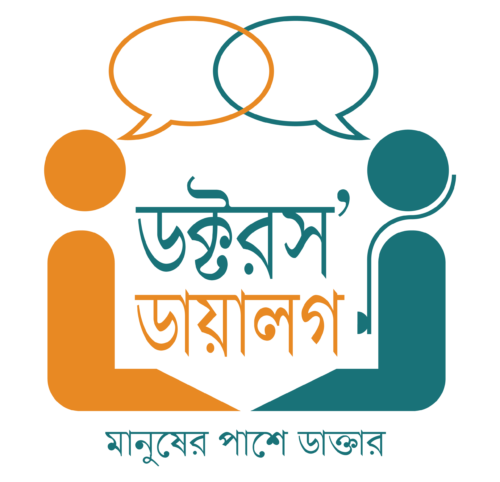

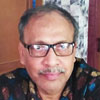












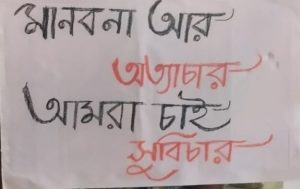
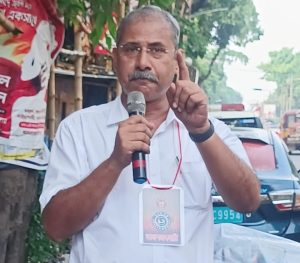
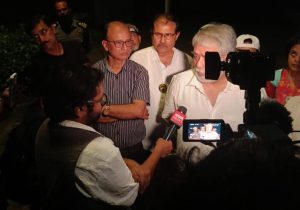
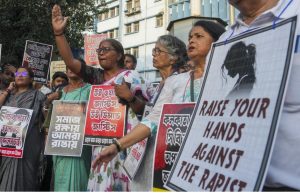
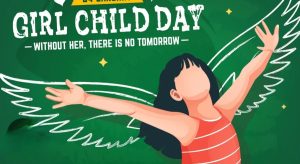
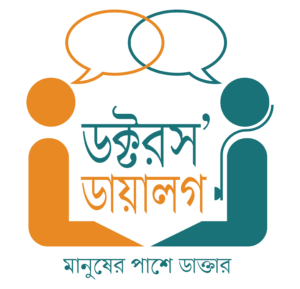





অসংখ্য ধন্যবাদ স্যার আপনাকে ।🙏
অসাধারণ সুন্দর একটি তথ্য দেবার জন্য। যা সবাই কে আরো উদ্বুদ্ধ করবে মর্ম, মর্মস্থান এবং আয়ুর্বেদে শল্যচিকিৎসা , সমন্ধে জানার জন্য ।